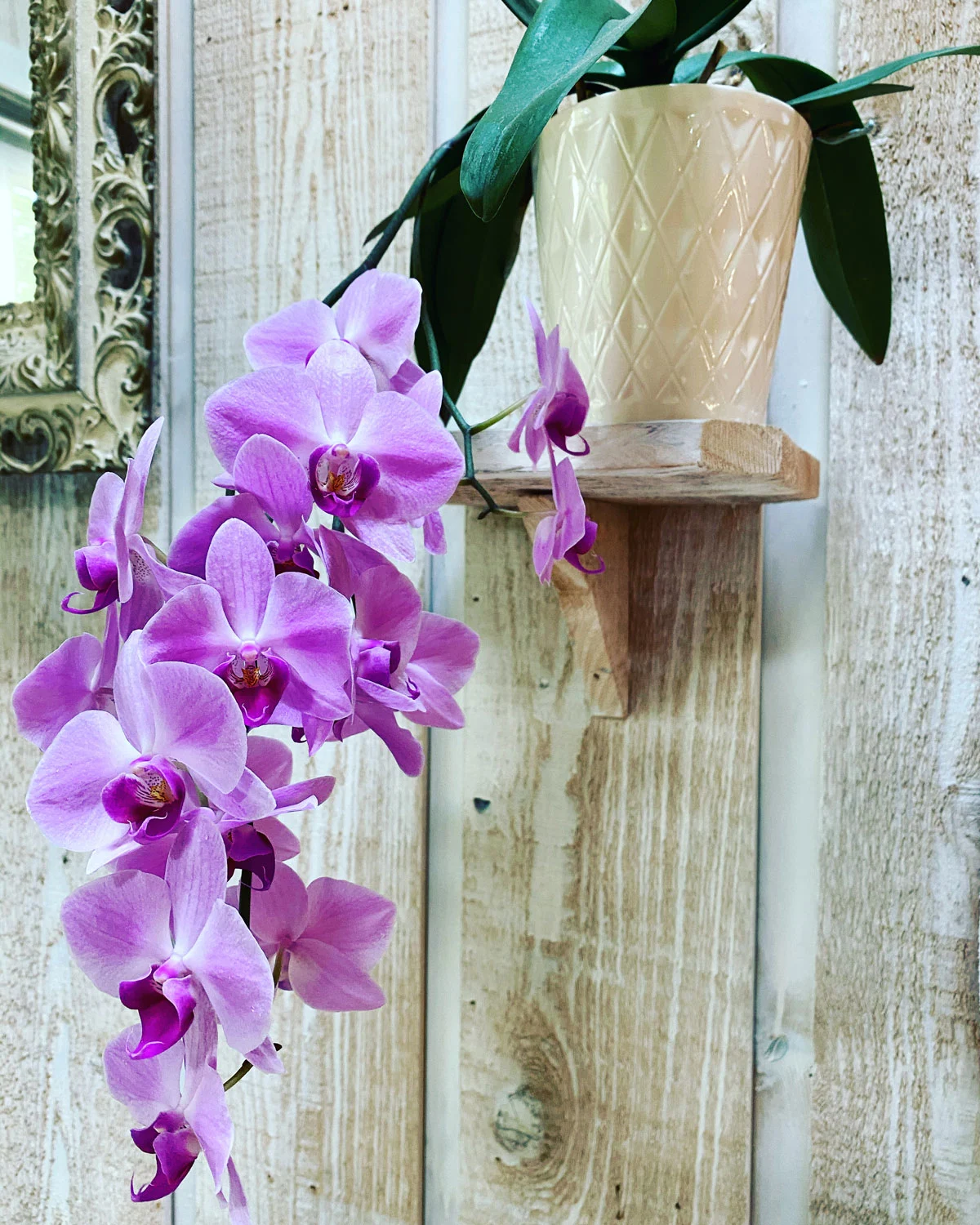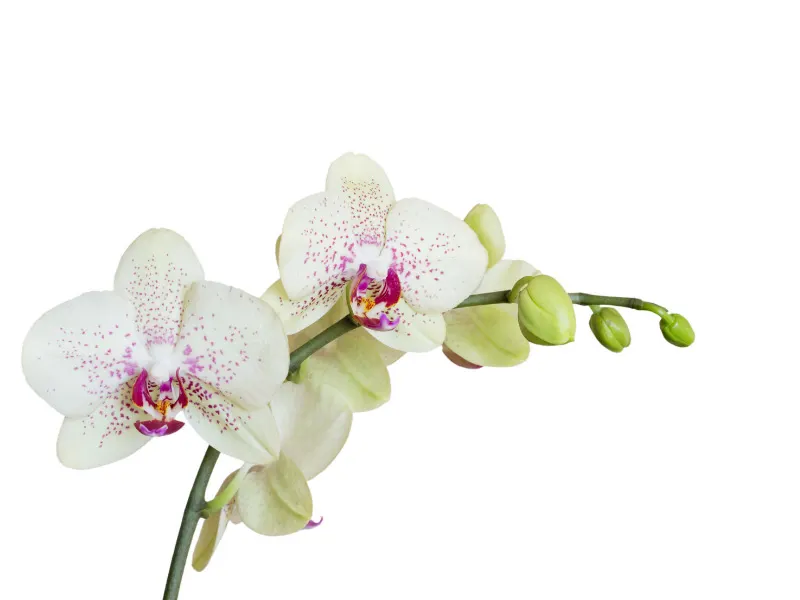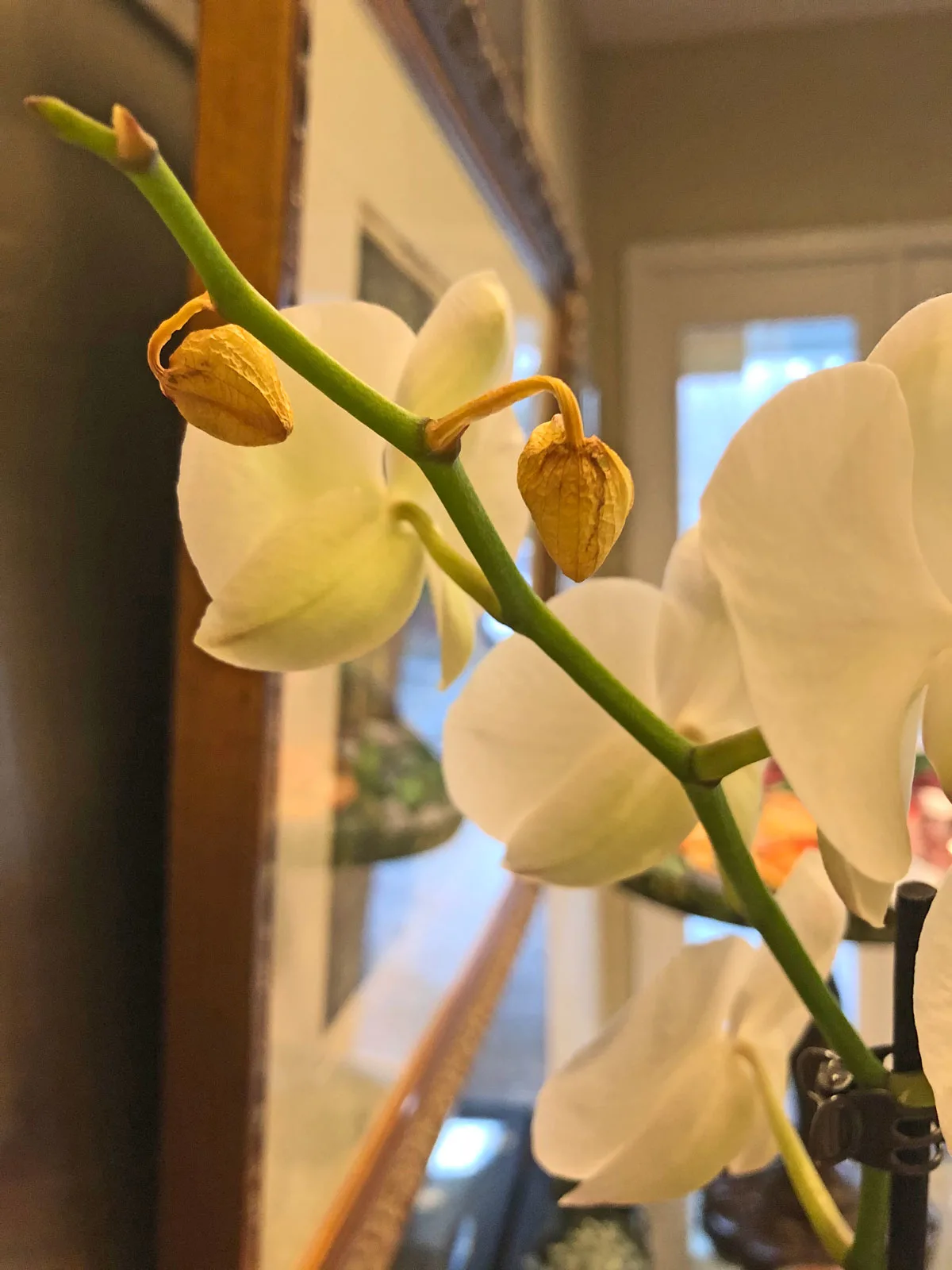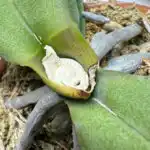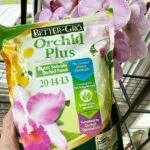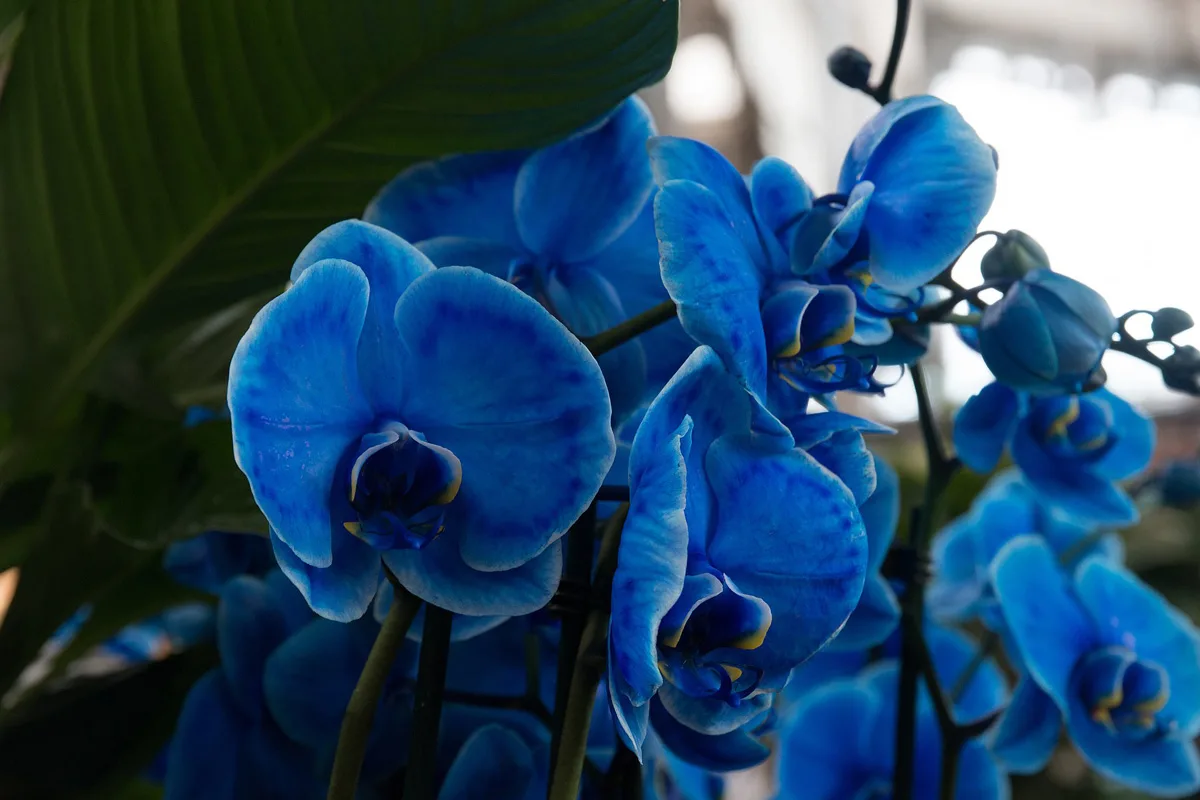Some of the links in this post may be affiliate links.
There is no need to stress out over the winter care of your Phalaenopsis orchids. But there are a few things to consider that will help your plants make it through the winter with flying colors. Let me show you.
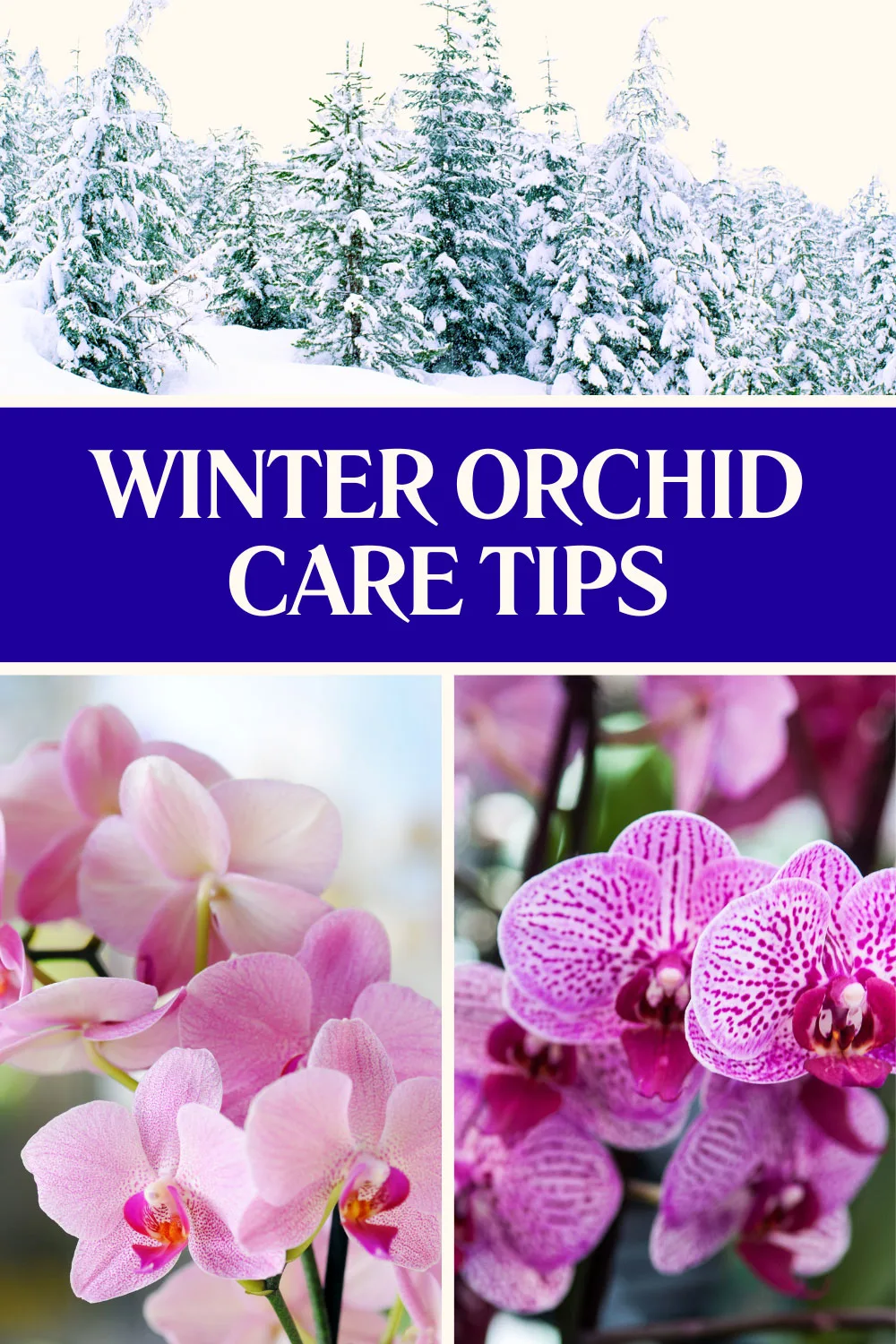
Table of Contents
WINTER ORCHID CARE CONSIDERATIONS
1. Temperature
If you live in a climate with cold winters like me, there are a few things to keep in mind. If you live in a warm climate, feel free to skip to the next sections!
Phalaenopsis orchids are warmer growing orchids and they don’t like cold temperatures, particularly drafts. In general, keep in mind that Phalaenopsis generally don’t like to go below 50°F (10°C). This should be treated as a minimum temperature. Ideally, a temperature range of 60-85°F during most of the year (~16-29°C) is good for them.
Here are some things to avoid when it comes to temperature conditions:
- Avoid sudden cold drafts from opening and closing windows and doors. Rapid fluctuations in temperature can harm the plant and cause bud blast (where flower buds dry up and fail to open).
- Avoid any part of your orchids (leaves, flowers, etc) from being in direct contact with your windows. Contact with freezing temperatures can damage your plant.
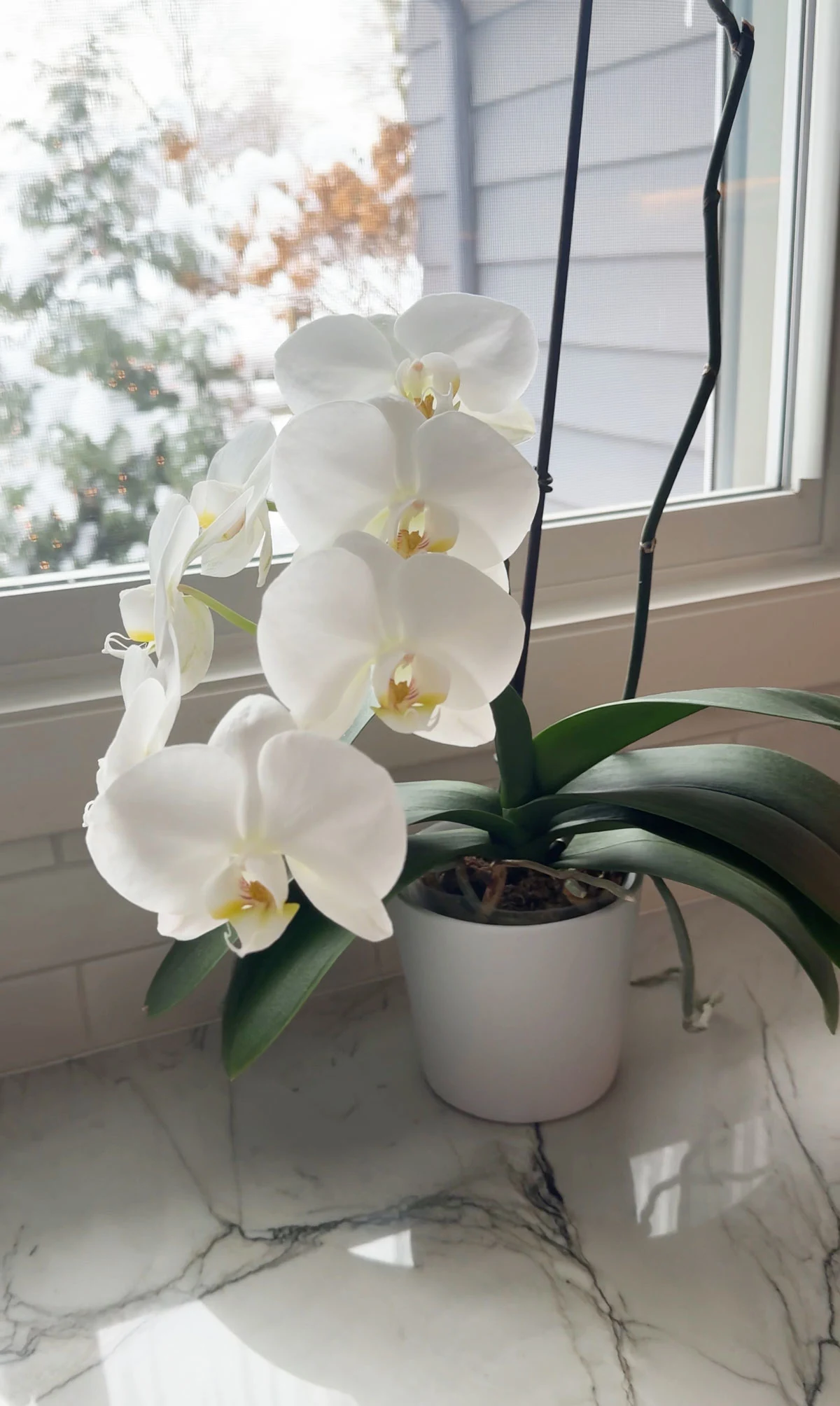
If your home is well-insulated, you’re keeping your orchids away from any cold drafts, and you keep your thermostat at the same temperature year-round, you don’t have much to worry about! For example, we keep our thermostat at 68-70°F year-round so my orchids inside the house will stay at pretty constant temperatures.
If you have really drafty windows, you may want to use window insulation kits during the winter, or simply even draw curtains and/or blinds closed at night in order to minimize any damaging drafts. (Open those curtains and blinds back up in the morning though, so your orchids can get the light that they need!)
Last thing, avoid having your heating vents blowing directly on your orchids. This can damage the leaves and flowers and shorten the lifespan of any flowers.
2. Light
For those of us living in northern latitudes, it means that days will be much shorter during the wintertime. Here are 3 options to consider when it comes to light during wintertime:
- If you already have your plants growing in front of a good window and your plants have been flourishing, you can keep things the way they are.
- If you’ve been keeping your plants more than a foot or two away from a window, you may consider moving your plants closer to a window, especially during wintertime in more northern latitudes. Light is extremely important for growth and flowering. And don’t be afraid of at least a little direct sun, particularly morning sun which is gentler, especially during the winter.
- Don’t be afraid to add grow lights, either to supplement natural light, or to grow strictly under grow lights. If you grow strictly under grow lights, I recommend having the lights on for 12 hours and off for 12 hours each day. I’ll be writing a blog post shortly on growing orchids under grow lights.
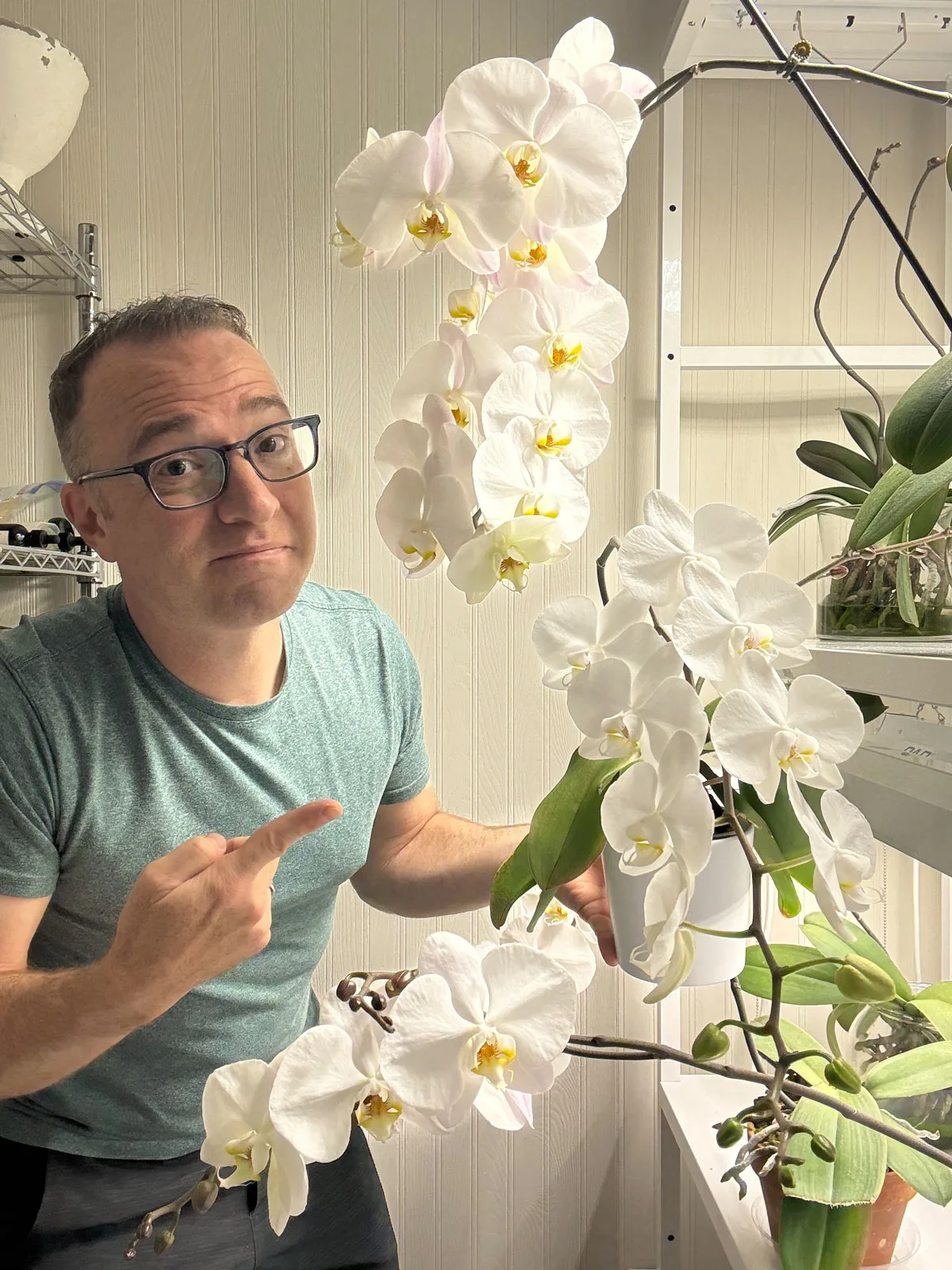
3. Humidity
For those of us running forced air heat in our homes, the air can be painfully dry for both our plants and our skin! Though having dry air is not a life-or-death situation, it will help your orchids to increase humidity.
You don’t have to go crazy with humidity. In fact, you can overdo it, especially if you have poor air flow. High humidity and poor air flow can cause fungal issues.
If you can keep your growing area humidity in the 40-60% range, your orchids will be happy with that. The best way to increase humidity is to invest in a good humidifier. My favorite now is the MIRO-NR08M humidifier because it’s effective, AND easy to clean and fill with water. The Levoit humidifiers also do a great job, and at a lower price point.
Never point the stream of mist directly at your orchid. This will only encourage fungal issues.
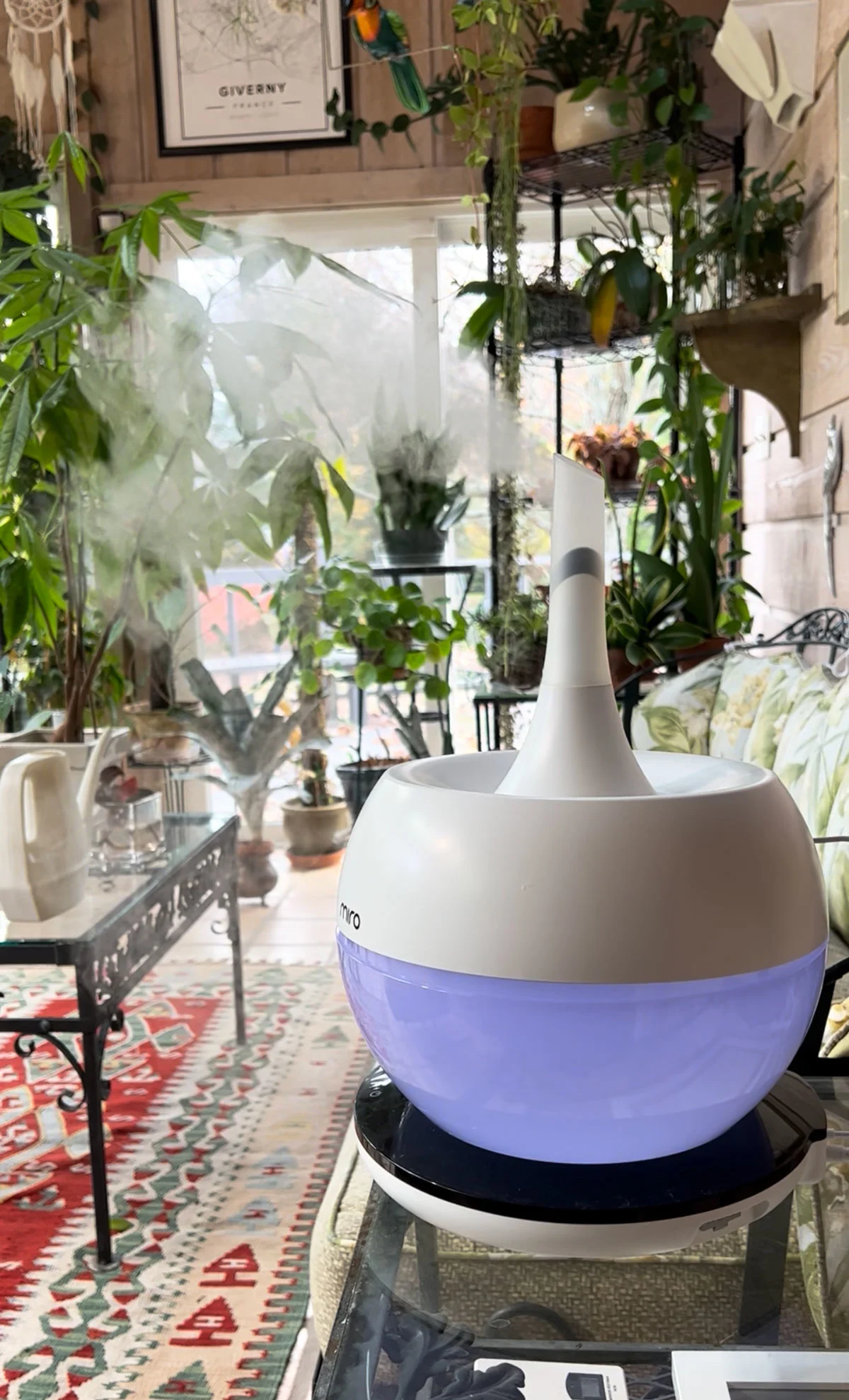
And misting your orchids will NOT increase humidity of the air. The effects will be very short and negligible. Investing in a good humidifier is the most effective way to increase humidity in your orchids’ growing area.
4. Fertilizing
I often am asked whether we should be fertilizing our Phalaenopsis orchids during the wintertime. The answer is…it depends.
If you have your Phals living under grow lights year round and your plants are actively growing, then sure! You can fertilize during the wintertime.
If you aren’t supplementing with grow lights during the wintetime, and your plants’ growth is at a standstill, you can greatly reduce or even cut out fertilizer. Once you see signs of growth, in late winter or early spring for example, you can resume fertilization.
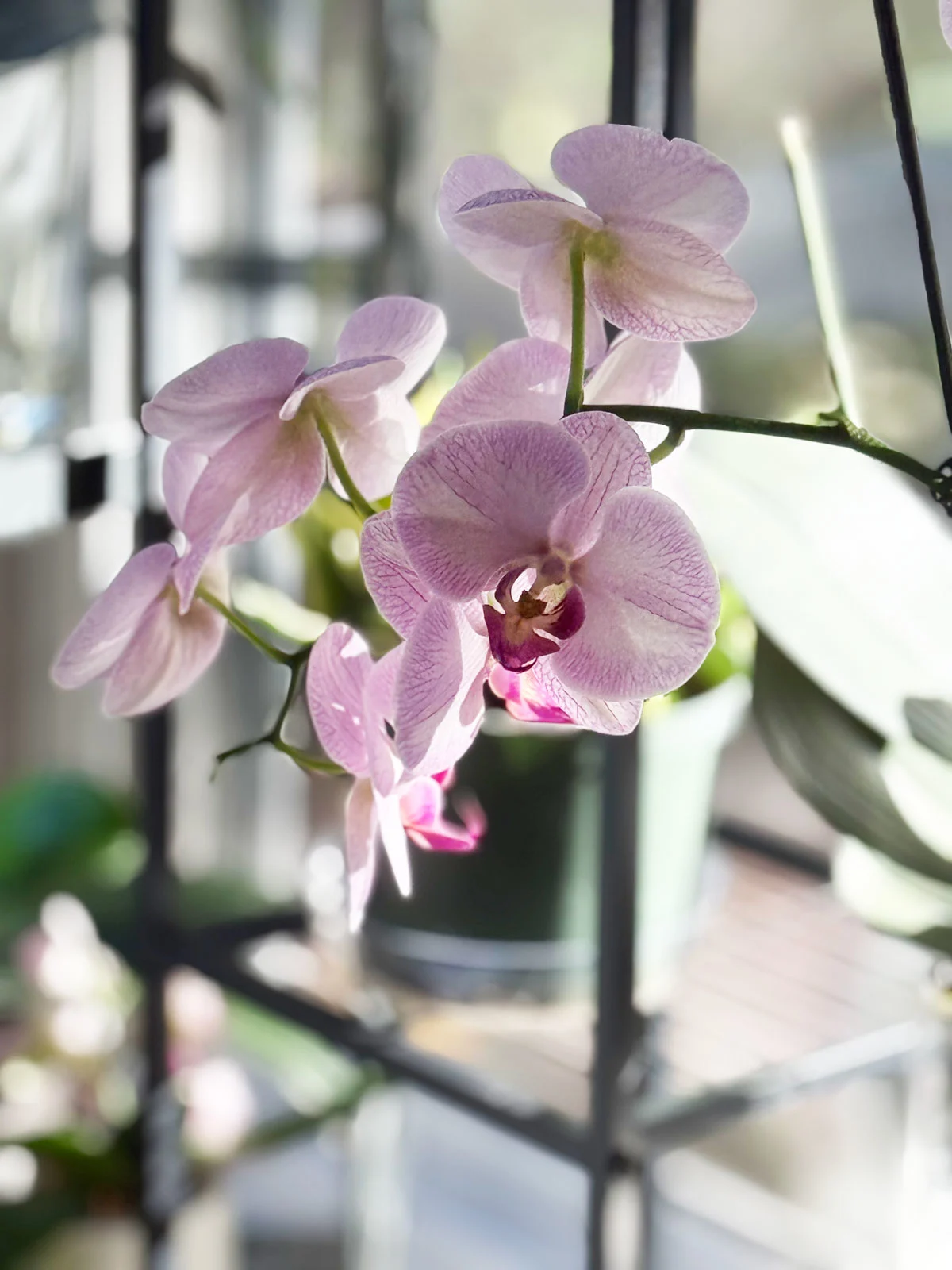
Don’t miss my blog post on how to fertilize orchids for more details and fertilizer recommendations.
5. Watering
Let me make one thing clear. You still have to water your Phalaenopsis orchids in the winter. The frequency may change though, and in many cases, you’ll probably end up watering less frequently.
Why do I say probably? Because all of our growing conditions are different, and things like temperature and light (among other things) will greatly affect the frequency of watering. Let me explain.
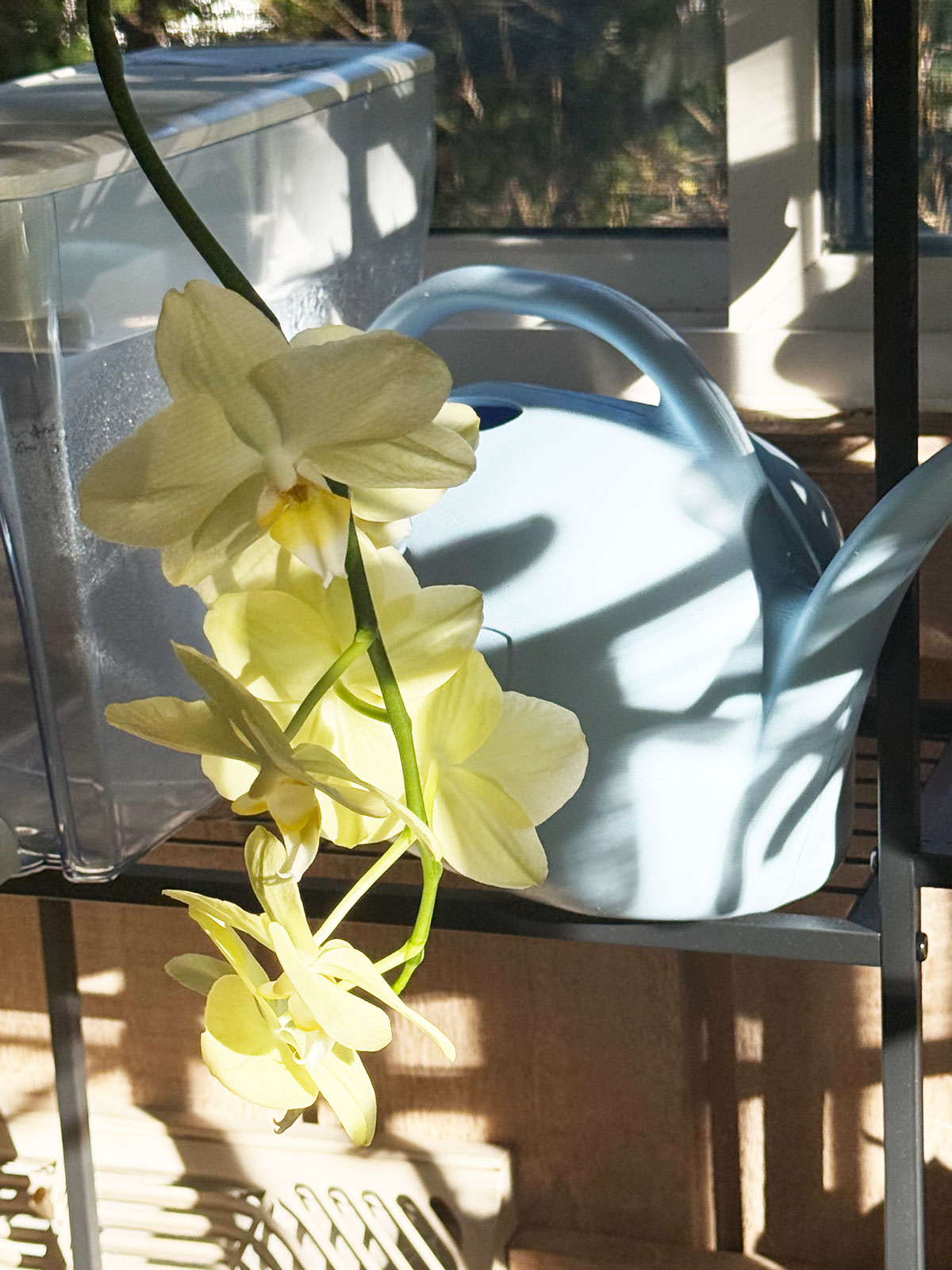
If you crank up the heat in the wintertime, and your humidity is low, and you’re growing under grow lights, you’ll end up having to water more often. Higher temps, low humidity and higher light will cause your plants to dry out more quickly.
Here’s another scenario. Let’s say your home is cooler in the winter and you’re not supplementing with extra light, you likely will be watering your orchids less frequently than in the summertime.
The moral of the story is to be flexible with watering. The frequency at which you water depends greatly on your growing conditions.
If you are growing your Phalaenopsis orchids in clear plastic pots, an easy way to tell when to water is when you see silvery colored roots. When roots are hydrated, they will be green. When they are dry, they will be silver.
If you want to learn all about how to get your orchid to rebloom reliably and have healthy, thriving moth orchid plants, don’t miss my signature, online orchid care course, Become an Orchid Master. It also includes bonuses with support from me, personally, to guide you in your orchid journey!

